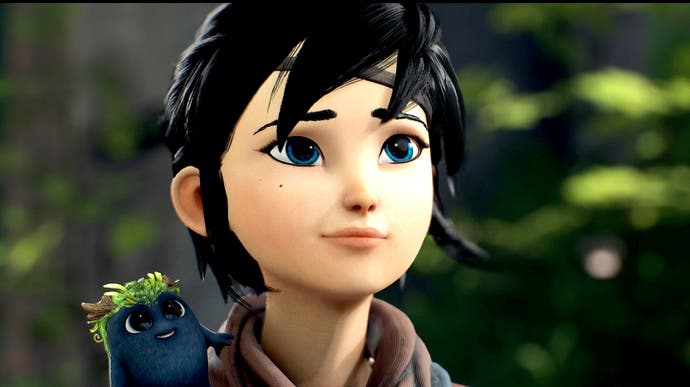Kena: Bridge of Spirits looks great on PS5, but what about PC?
Plus a look at the PS4 Pro experience.
Kena: Bridge of Spirits from Ember Labs finally released this week, initially capturing our attention at the PlayStation 5 gameplay reveal event last year thanks to a visually fresh, appealing presentation. Based on Unreal Engine 4, Kena shines through the artistic accomplishments of the developer, backed by a solid game design and mostly solid performance. However, underlying issues with UE4 do peek through - and they're especially evident on the PC version of the game.
In putting this piece together, we took a look at the game running in both quality and performance modes on PlayStation 5 and factored in platform scaling in both directions. In theory, the PC version should allow us to see Kena running at its absolute best, while taking a look at the game operating on PS4 Pro gives us an idea of how older hardware copes with a very attractive game. As it happens, everything plays out as logically as you would expect - but the extra horsepower in PS5 and high-end PC goes a long way in delivering Kena at its best.
In terms of what makes Kena special, it's not just the style of the art that stands out but also the basic quality in delivery. Every object, every texture and material seems to have been authored with a consistent style and polygon budget. There's an understanding of which edges need to be rounded and which can retain a more obvious polygonal structure. Combine it all together and you rarely find an object that sticks out as being of an inconsistently low res, or modelled oddly. On top of that, character expressions and animations are first class: Ember Lab previously worked on animation shorts for fan films, product advertisements, and other mainstream media.
Flourishes in all areas of the animation are excellent, while the expressiveness of Kena and her 'rot' companions is also a high point - it's lovingly crafted and so, so cute. Secondary animations such as the effects of your actions within the scene are also expertly implemented. The level of polish is excellent but not without its issues: transitions between animations aren't quite smooth enough, while camera motion can be prone to minor hitching.
In terms of engine scalability, let's start at the bottom of the stack. We didn't have time to test the base PS4 game, but the Pro targets 30fps and seems to run at a dynamic resolution between 1188p and 1440p, but seems to stick to the upper end of the range for the most part. In comparison to PS5's 60fps performance mode, vegetation density is pared back, object LODs are more noticeable and shadow resolution is also chunkier. Signed distance field ambient occlusion - used to great effect on PS5 - is also missing. For its part, the PS5 performance mode operates in a similar resolution window with reconstruction up to 4K, but can run in some areas with a reduced resolution. Both versions look good on a 4K screen at standard living room viewing distances, but do not pass for a native 4K presentation. The Pro's 30fps mode is extremely solid in performance terms, while PS5 targeting 60fps is generally fine but can occasionally drop frames due to genuine GPU limits, while traversal can also exhibit minor stutter.
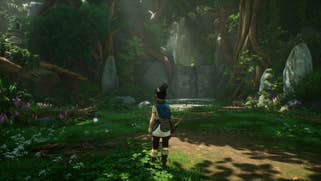


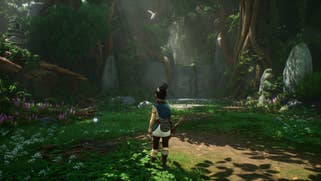
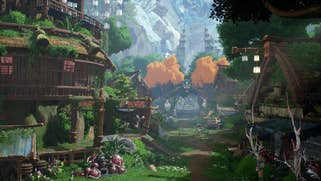
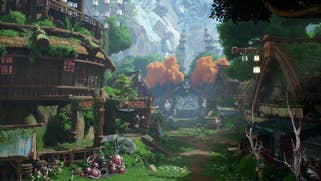
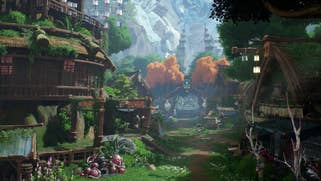
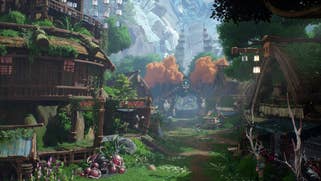
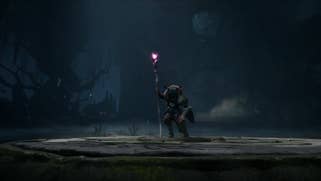

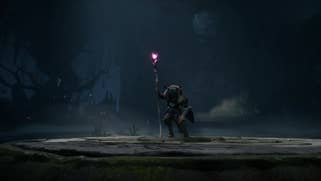
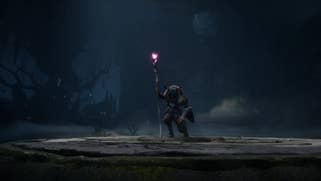


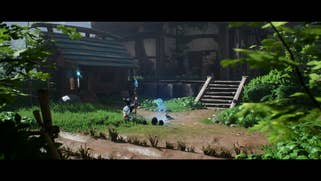
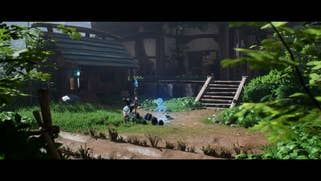
PlayStation 5 also offers a quality mode too. 30fps is the order of the day here, and with a DRS window that came in at 1944p-2160p in our samples, you are getting a pristine presentation. On top of the improved clarity, quality mode also offers up a richer scene via improved plant density - and similar to the single performance option on PS4 Pro, 30fps is delivered with an excellent level of consistency, as you would hope.
The PC version offers significant upgrades over PlayStation 5, but the further you push in performance terms, the more unstable the experience becomes. However, certainly from a visual perspective, the game is a treat. However, there is no 'out of the box' support for temporal anti-aliasing upscaling - a brilliant feature in UE4 that offers close-to-native quality if used sensibly, while reducing GPU load considerably. Thankfully, this can be enabled via a very simple .ini file tweak. What you do get with the supplied settings menu is improved shadow quality, better textures, far superior anisotropic filtering and a boost to volumetric fog quality.
| PC Equivalent Settings | PS5 Performance | PS5 Quality | PC Optimised |
|---|---|---|---|
| Resolution | Dynamic 1296p-1512p | Dynamic 1944p-2160p | User Choice |
| Motion Blur | High | High | User Choice |
| Shadows | High | High | High |
| Foliage | High | Ultra | High |
| Texture Quality | Low/Ultra | Low/Ultra | Ultra |
| Texture Filtering | Low | Low | Ultra |
| Volumetric Fog | Low | Low | Low |
| Ambient Occlusion | High | High | High |
| Post-Processing | Ultra | Ultra | High |
In selecting optimised settings, opting for PS5-equivalent settings matched to performance mode is a good place to start, but I'd recommend dropping back depth of field, shadow quality, ambient occlusion and motion blur. DX11 and DX12 options are available which, when tested on an Nvidia GPU, sees DX11 gives overall higher frame-rates in GPU-bound situations but introduces poor frame-times - DX12 is the better pick. Even so, traversal can still cause obvious stuttering and what looks to be dynamic shader compilation stutter when certain effects kick in for the first time. Other studios have managed to largely address this issue, such as The Coalition with Gears 5, or Sony Bend with Days Gone. More recently, we saw Neon Giant Games fix this issue in a patch for the Ascent. So, it is doable - Ember Lab just needs to figure it out.
In terms of the kind of hardware you need to get 60 frames per second running consistently on optimised settings, an Nvidia RTX 2060 will do the job for native 1080p, while hardware in the class of an RTX 2070 Super is needed for 1440p. Meanwhile, a convincing 4K-like presentation is attainable using a GPU like an RTX 3070 or RTX 2080 Ti - but for this, you'll need to dig into the .ini files and allow for TAAU temporal upscaling. Setting this to 83 percent renders natively at 1800p, but the upscaling is very good. If you're looking to aid performance, this is a very good place to start and at 4K output, a range of 70 to 83 percent still looks good. TAAU can be used for lower output resolutions of course, but the values will need to be higher.
In summary, this is a good game that's well worth your time, but the PC version does exhibit some technical hitches that definitely need addressing for a stutter-free experience - and I can't help but think that sorting out these problems may well improve PlayStation 5's consistency in performance mode too. I'd also like to see Ember Lab use more of the UE4 toolbox - dynamic resolution scaling, 'official' TAAU and DLSS options would only make a good game even better.
